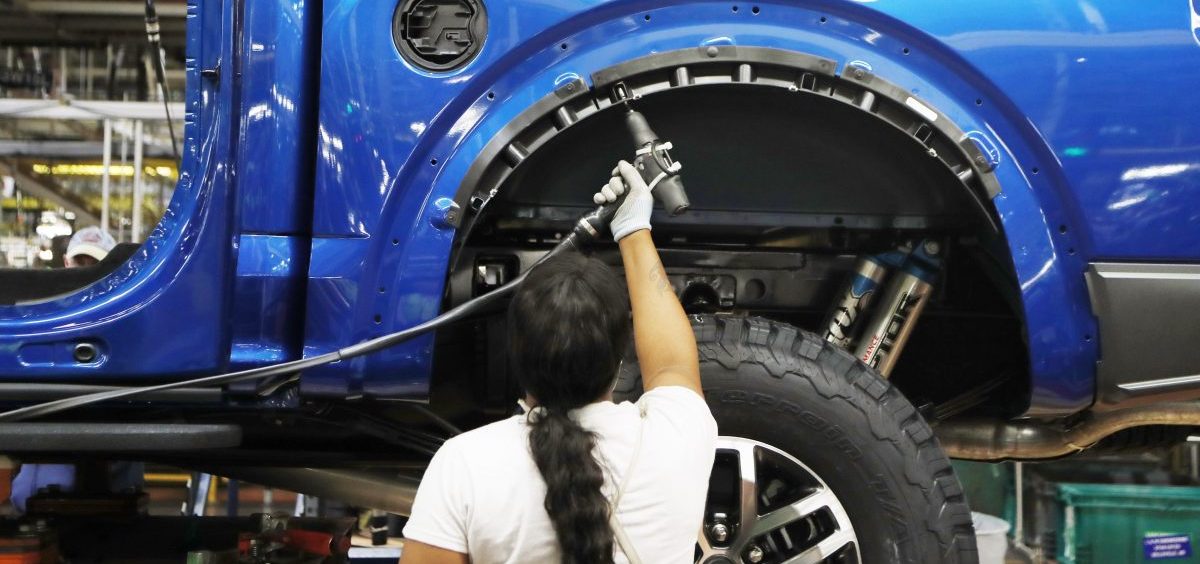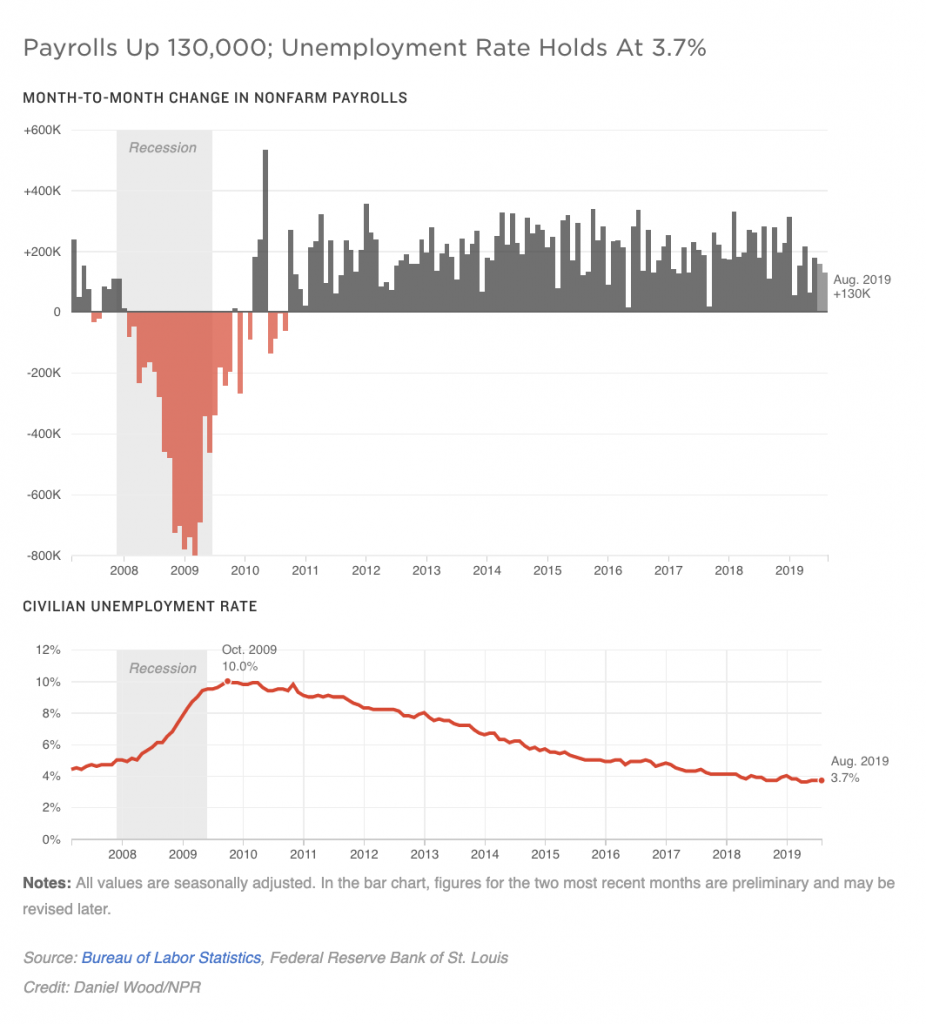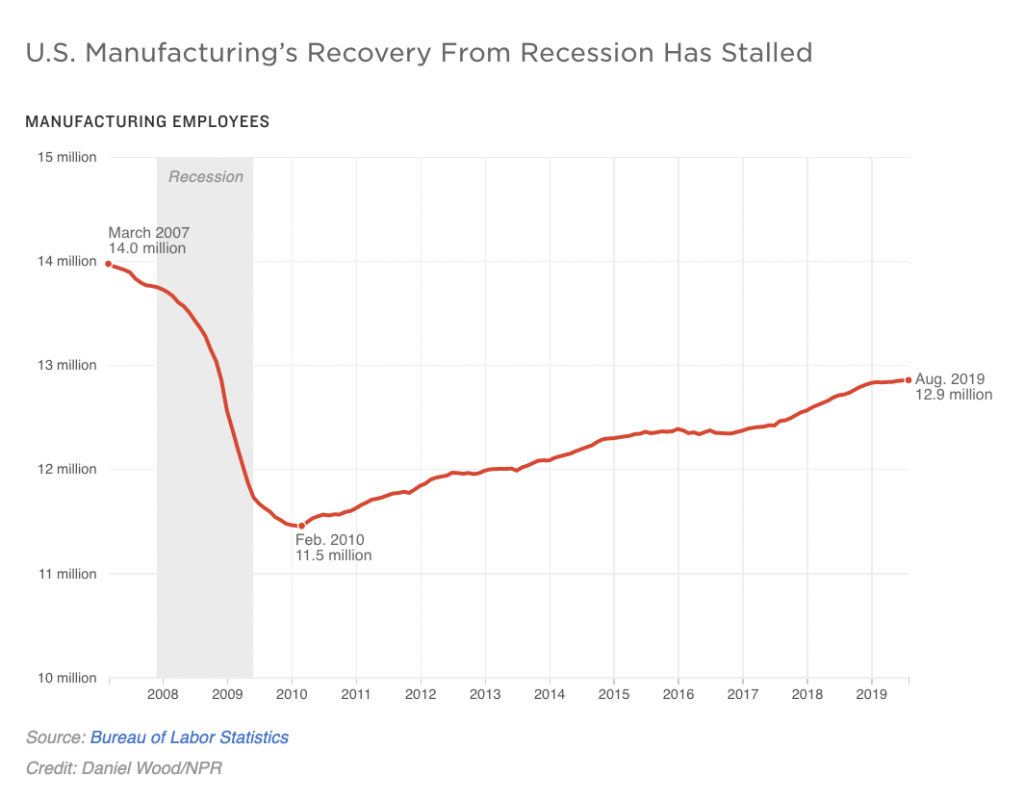News

Tepid U.S. Jobs Report Adds To Economic Jitters
By: Scott Horsley | NPR
Posted on:
Updated at 9:44 a.m. ET
U.S. employers added 130,000 jobs in August, according to a monthly snapshot from the Labor Department, signaling a slowdown in the pace of job growth.
Forecasters surveyed by the Reuters news service had predicted job gains of around 158,000.
The unemployment rate held steady at 3.7%.
Manufacturers added just 3,000 jobs.
The jobs total would have been lower without the addition of 25,000 temporary census jobs. Job gains for the two previous months were revised downward by a total of 20,000.
Don’t see the graphic above? Click here.
The report will be studied closely by forecasters trying to gauge the strength of the U.S. economy, which has been sending mixed signals in recent days.
Surveys this week from the Institute for Supply Management painted starkly different pictures of the manufacturing sector, which has been battered by the U.S. trade war with China, and the much larger services side of the economy, which continues to show strong growth.
The factory sector shrank in August for the first time in three years.
“We’ve certainly seen a divide where the manufacturing sector has weakened much more notably,” said senior economist Sarah House of Wells Fargo Securities. “But we have seen some softening in the broader service sector as well.”
Manufacturing is more sensitive than the services sector to global forces such as the trade war. If the manufacturing slowdown is contained, the fallout could be limited.
“We haven’t had a manufacturing-led recession for 50 years,” said Jared Bernstein, an economist with the Center on Budget and Policy Priorities. “[It] doesn’t mean we couldn’t. But we’re now talking about a sector that’s 8% of employment and 11% of output. Those numbers used to be three times that.”
Bernstein said that while the manufacturing sector is probably in a recession already, that need not bring down the larger economy.
Don’t see the graphic above? Click here.
“It’s not pretty and it’s not something I like to see and it’s a totally self-inflicted wound, so it’s really dumb,” said Bernstein, who served as economic adviser to former Vice President Joe Biden. “But I don’t know that it’s recessionary at this point.”
Average hourly wages rose by 11 cents in August, to $28.11, for an average annual increase of 3.2%.
Wage gains and low unemployment helped to fuel strong consumer spending during the spring and summer.
“Household consumption right now is propping up the U.S. economy,” said Joe Brusuelas, chief economist for the audit and consulting firm RSM. “We’ll see if the uncertainty tax that’s been placed on the economy by trade policy begins to adversely influence consumer attitudes.”
A significant chunk of consumer spending is now going to nontraditional retailers. The retail sector continued to hemorrhage workers, shedding 11,000 jobs in August.
Although wages have been rising faster than inflation, boosting consumers’ real spending power, the gains have remained relatively modest.
“We would expect the wages to move sideways for a little bit here as companies try to grapple with” tariffs, said House of Wells Fargo Securities. “For those companies directly affected, the pressure on their margins means that they might not be able to offer quite as much to their employees.”
There was some positive news in the monthly report. The labor force participation rate jumped two-tenths of a percentage point to 63.2%. And the average workweek rose by a tenth of an hour.
9(MDI4ODU1ODA1MDE0ODA3MTMyMDY2MTJiNQ000))



